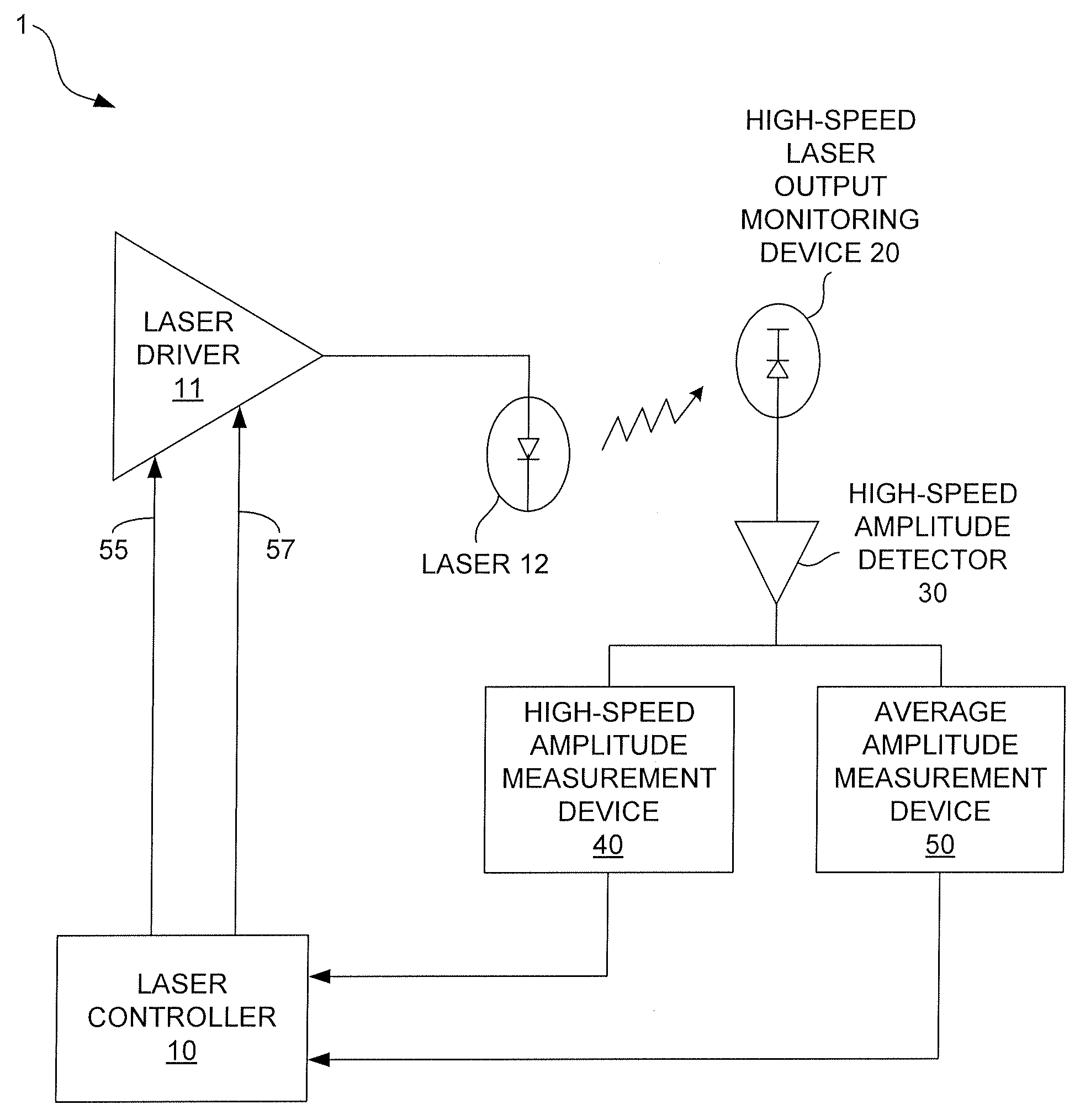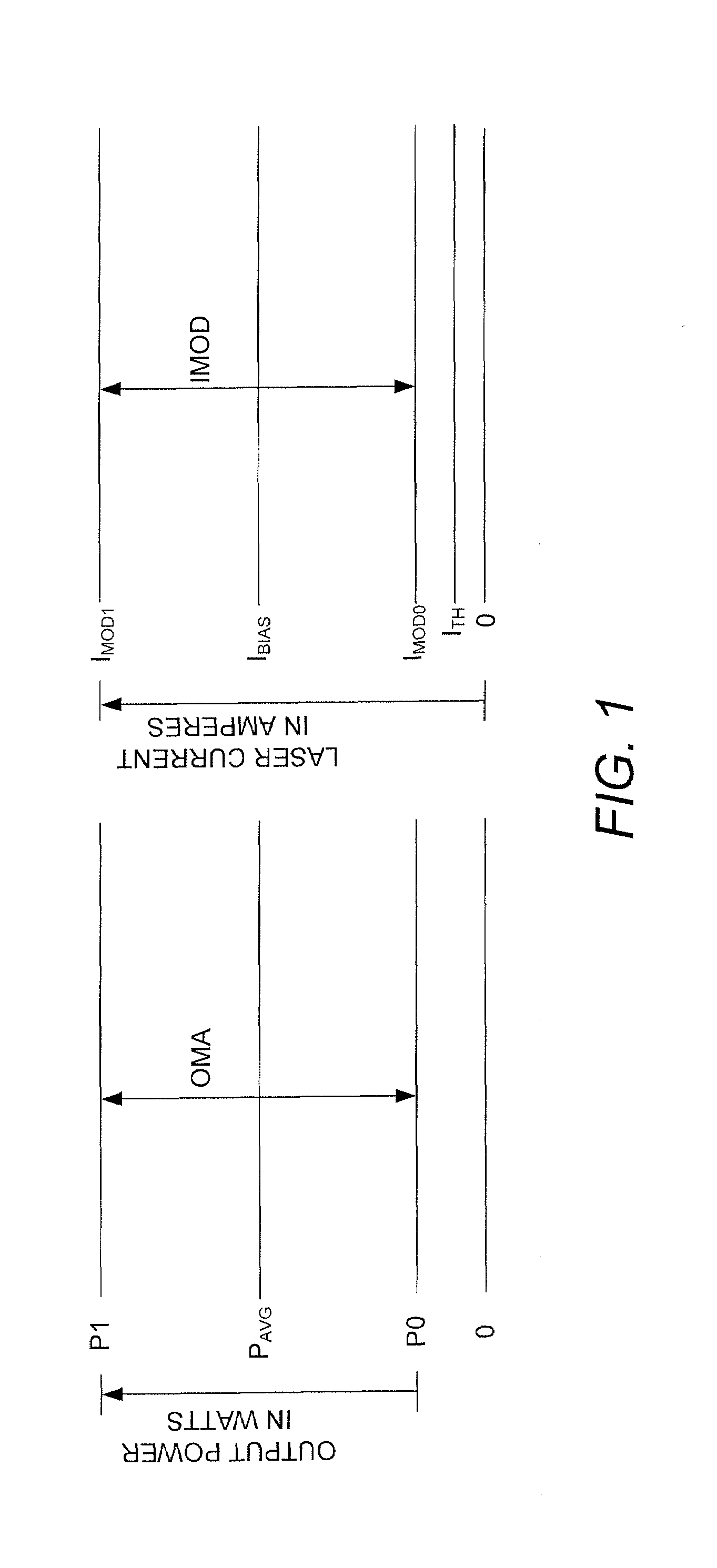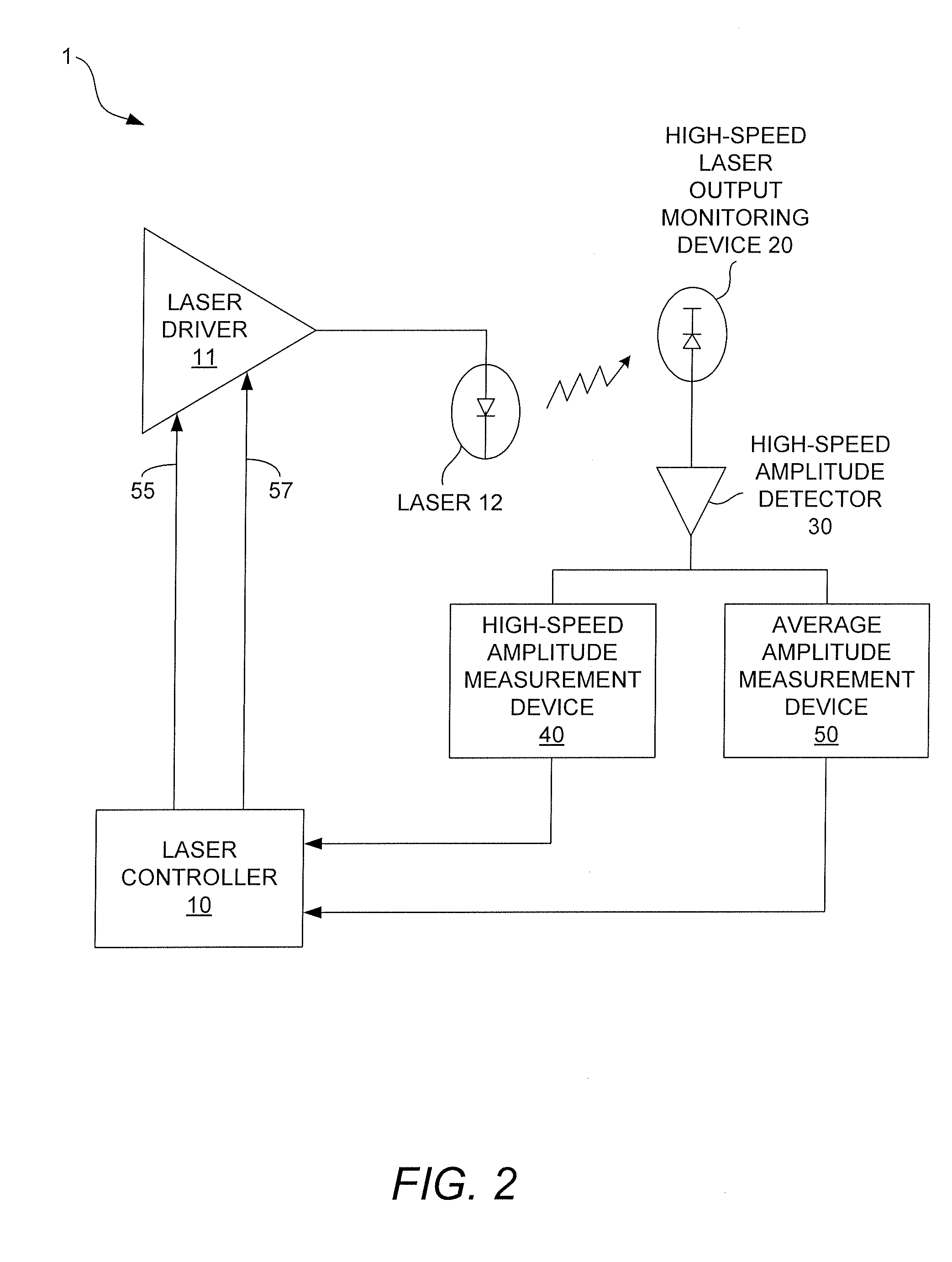Method and apparatus for controlling output power levels of a laser used for optical data transmission based on data rate-speed optical feedback
a technology of optical data transmission and output power level, applied in the field of lasers, can solve the problems of limiting laser yield, difficult or impossible to determine the optimal adjustment of modulation current amplitude, and challenging to maintain optical power at a particular level
- Summary
- Abstract
- Description
- Claims
- Application Information
AI Technical Summary
Benefits of technology
Problems solved by technology
Method used
Image
Examples
Embodiment Construction
[0018]FIG. 1 illustrates a graph that demonstrates the relationship between laser output power in watts and laser current (bias, threshold and modulation) in amperes. To cause the laser to produce an output power level of P0 for a logic 0 level, the laser is modulated with a modulation current, IMOD0, that has an amplitude that is equal to or slightly greater than the amplitude of the laser threshold current, ITH. If the amplitude of IMOD0 falls below the amplitude of ITH, the laser is being over-modulated due to the fact that the laser is being turned off and the level of P0 cannot fall below zero, so the amplitude of the modulation current for a logic 1 level, IMOD1, must be increased in order to maintain IBIAS at a constant amplitude. Maintaining IBIAS at a constant amplitude generally results in the average output power level, PAVG, being maintained at a constant level, except when the laser is being over-modulated. When the amplitude of IMOD0 falls below the amplitude of ITH, t...
PUM
 Login to View More
Login to View More Abstract
Description
Claims
Application Information
 Login to View More
Login to View More - R&D
- Intellectual Property
- Life Sciences
- Materials
- Tech Scout
- Unparalleled Data Quality
- Higher Quality Content
- 60% Fewer Hallucinations
Browse by: Latest US Patents, China's latest patents, Technical Efficacy Thesaurus, Application Domain, Technology Topic, Popular Technical Reports.
© 2025 PatSnap. All rights reserved.Legal|Privacy policy|Modern Slavery Act Transparency Statement|Sitemap|About US| Contact US: help@patsnap.com



